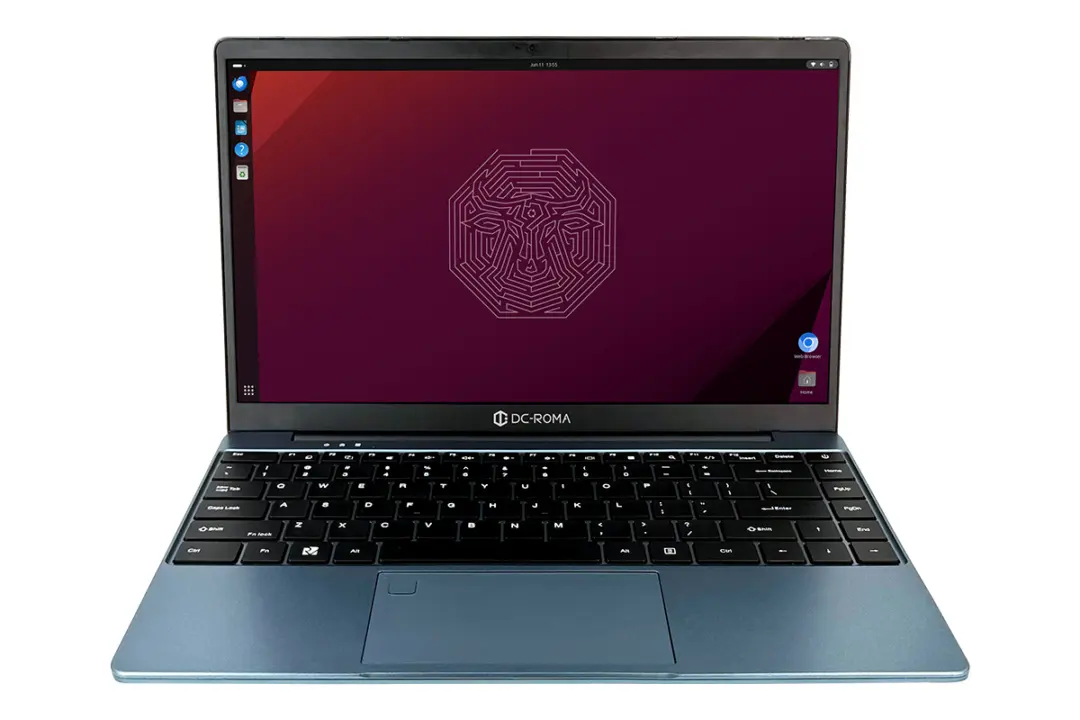Introduction
In a groundbreaking move for the open-source community, Canonical has announced the launch of the world’s first RISC-V laptop, powered by Ubuntu. Canonical didn’t manufacture the laptop itself, but collaborated with a Hong Kong-based company, DeepComputing, on the second-generation DC-ROMA RISC-V Laptop II. This laptop is significant for being the first to come pre-loaded with Ubuntu Linux.

Why is this a big deal?
First RISC-V Laptop with Ubuntu: While there have been other RISC-V laptops before, the DC-ROMA II is the first to come pre-loaded with a mainstream operating system like Ubuntu. Ubuntu is a popular and well-supported Linux distribution, which means a wider range of software will be compatible with the laptop “out of the box.” This is a significant step towards making RISC-V a more viable alternative to established architectures like x86.
Advancement in RISC-V Technology: The DC-ROMA II showcases advancements in RISC-V processor technology. The 8-core SpacemIT K1 SoC with 2.0 GHz clock speeds represents a performance leap from previous RISC-V offerings. This demonstrates the potential of RISC-V to compete with traditional architectures in terms of raw processing power.
Potential for Innovation: The open-source nature of RISC-V allows for greater customization and innovation compared to proprietary architectures. The 8-pin developer interface on the DC-ROMA II opens doors for developers to tinker with the hardware and explore the potential of RISC-V for various applications. This could lead to new and exciting developments in the future.
Increased Competition: The arrival of the DC-ROMA II signifies growing competition in the processor market. This can potentially lead to lower prices and more innovation across the board, benefiting consumers.
This development represents a significant milestone in the evolution of computing, blending Canonical’s expertise in open-source software with the innovative potential of RISC-V architecture.
The DC-ROMA RISC-V Laptop II is the world’s first RISC-V laptop pre-installed and powered by Ubuntu, which is one of the most popular Linux distributions in the world, providing developers with an outstanding mix of usability and reliability, as well as a rich ecosystem with security and support.
Background: RISC-V and Open-Source Revolution
RISC-V is an open-source instruction set architecture (ISA) that has gained momentum for its customizable nature and innovation potential.
Developed at the University of California, Berkeley, RISC-V provides a standardized yet flexible platform.
It enables developers to create tailored solutions without being tied to proprietary architectures.
This openness has attracted interest from tech giants and startups alike. They seek to leverage RISC-V across diverse applications, from embedded systems to high-performance computing.
Read More: The $160 Billion What-If: SoftBank Blunder with NVIDIA – techovedas
Canonical’s Commitment to Open Source
Canonical, known for its Ubuntu operating system, has long been a champion of open-source principles. Ubuntu, one of the most popular Linux distributions globally, is favored for its stability, security, and extensive community support. Canonical’s decision to embrace RISC-V reflects its dedication to expanding the accessibility and versatility of open-source computing solutions.
Read More: 6 Reasons Why Nvidia Overtook Apple as World’s Second Most Valuable Company – techovedas
The Importance of the First RISC-V Laptop
The introduction of the first RISC-V laptop running Ubuntu holds several key implications:
Diversifying Hardware Ecosystem: By supporting RISC-V, Canonical expands the range of hardware architectures compatible with Ubuntu, offering developers and users more choices in selecting computing platforms that best suit their needs.
Driving Innovation: RISC-V’s open-source nature encourages innovation by lowering the barrier to entry for hardware development. Canonical’s adoption of RISC-V facilitates collaboration among hardware manufacturers, software developers, and researchers, fostering a vibrant ecosystem of innovation.
Enhancing Performance and Efficiency: RISC-V’s architecture promises improvements in performance and energy efficiency compared to traditional architectures. The integration of Ubuntu optimizes software-hardware interactions, maximizing the potential of RISC-V-based systems in various computing scenarios.
Technical Specifications and Features
The first RISC-V laptop powered by Ubuntu boasts cutting-edge specifications designed to meet the demands of modern computing environments. Featuring advanced RISC-V processors and optimized Ubuntu software, the laptop promises robust performance, seamless user experience, and enhanced security features. This combination positions it as a compelling choice for developers, enthusiasts, and organizations looking to embrace open-source technology.
Here are some additional details about the DC-ROMA II RISC-V Laptop:
- Processor: SpacemIT K1 SoC with 8 cores capable of reaching 2.0 GHz clock speed. This is a significant upgrade from the quad-core processor in the first-generation model.
- Memory: LPDDR4X RAM, with options for either 8GB or 16GB. This faster memory type improves responsiveness and multitasking ability.
- Storage: Up to 1TB of solid-state storage (SSD) for fast boot times and application loading. Additionally, a microSD card slot provides expandable storage options.
- Display: 14-inch IPS display with a Full HD (1920 x 1080) resolution and a standard 60Hz refresh rate.
- Networking: Integrated Wi-Fi 6 and Bluetooth 5.2 for wireless connectivity.
- Ports: While specific details are lacking, it likely includes a USB-C port for charging and data transfer, additional USB ports for peripherals, and a 3.5mm headphone jack.
- Webcam: Built-in Full HD webcam for video conferencing and online calls.
- Battery: Up to 8 hours of battery life on a single charge, which is decent for a productivity laptop.
- Operating System: Custom-tailored Ubuntu 23.10 (likely to be upgraded to Ubuntu 24.04 soon) ensuring compatibility with a wide range of applications.
- Developer Interface: An 8-pin interface provides access to GPIO, UART, I2C for developers to tinker with hardware and experiment with the RISC-V architecture.
- Design: All-metal chassis for improved durability and heat dissipation compared to plastic designs. The weight is around 1.36 kg and the thickness is 1.7 cm.
Overall, the DC-ROMA II is a mid-range laptop aimed at developers and early adopters interested in exploring the RISC-V architecture. With its improved performance, Ubuntu compatibility, and developer features, it offers a compelling option for those who want to be on the forefront of this new technology.
Read More: 6 Reasons Why Nvidia Overtook Apple as World’s Second Most Valuable Company – techovedas
Future Prospects and Collaborative Efforts
Looking ahead, Canonical aims to deepen its integration of RISC-V across its product portfolio, ensuring broader compatibility and continued innovation. Collaborative efforts with hardware manufacturers and the open-source community will drive further advancements in RISC-V technology, pushing the boundaries of what’s achievable in computing.
Conclusion
Canonical’s unveiling of the first RISC-V laptop running Ubuntu marks a pivotal moment in the journey towards open-source computing excellence.
By harnessing the power of RISC-V architecture and Ubuntu’s reliability, Canonical not only sets a new standard for innovation but also strengthens the foundation for a more inclusive and collaborative computing ecosystem.
As RISC-V continues to gain traction, driven by Canonical’s leadership and community-driven initiatives, the future promises unparalleled opportunities for innovation and advancement in open-source computing.
This comprehensive blog post provides background context, outlines the importance of Canonical’s announcement, and explores the implications of the first RISC-V laptop running Ubuntu in driving open-source innovation forward.







